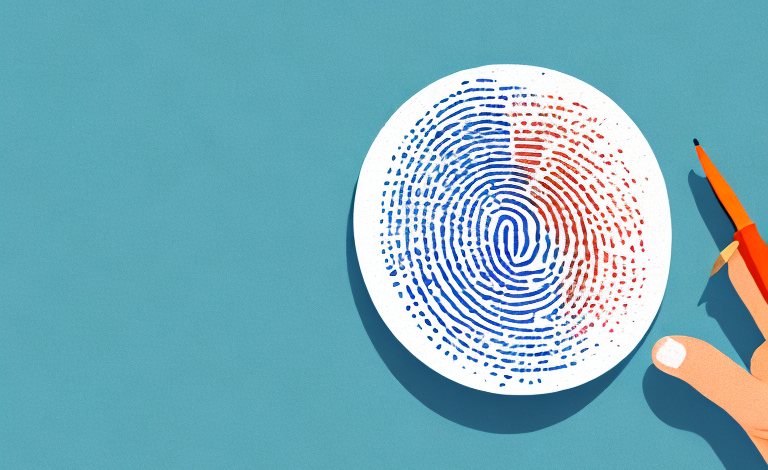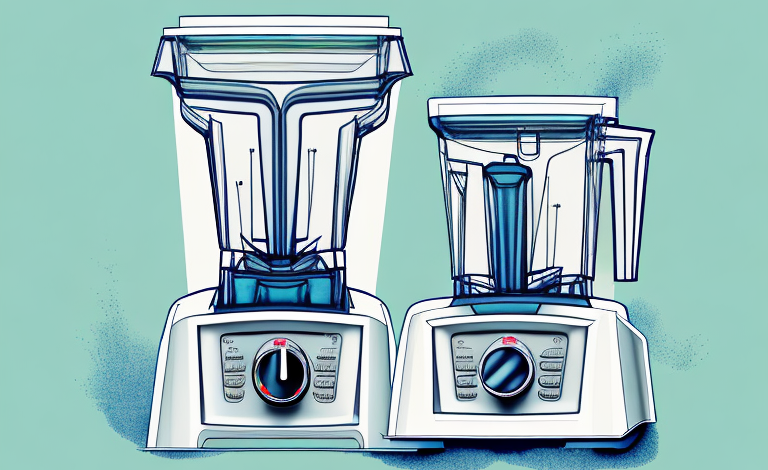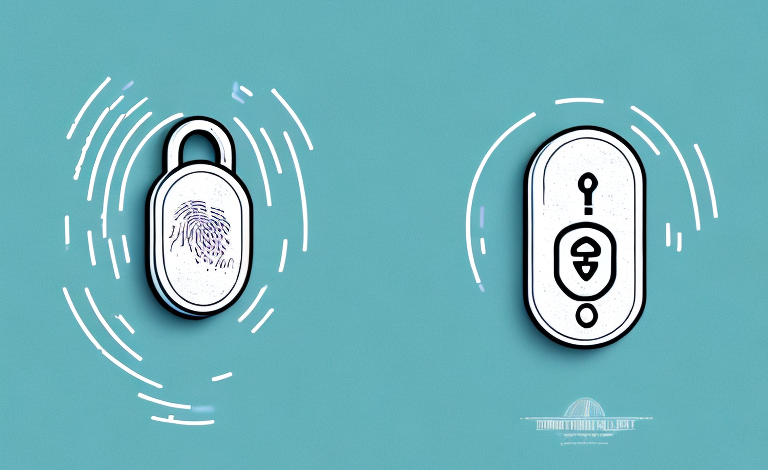Fingerprints are crucial to forensic investigations and are often the key to solving a crime. But, collecting fingerprints can be a challenge. One widely used method for lifting fingerprints is through the use of tape. But can you really lift a fingerprint with tape? In this article, we’ll explore the science behind lifting fingerprints with tape, how to properly collect a fingerprint using tape, the benefits and limitations of the method, and much more.
The science behind lifting fingerprints with tape
Fingerprints are unique to each individual, and they are formed by ridges and valleys on the skin’s surface. Every individual’s fingerprints are different, which makes them an excellent way to identify individuals. The tape lift method involves using transparent tape to remove the sweat and oils left behind in the ridges and valleys of a fingerprint.
The adhesive on the tape sticks to the residues left behind by the fingertips and allows those residues to be transferred onto the tape. Once the print is on the tape, it can be studied to identify its unique ridges and other characteristics. This method has been in use for many years, not just in forensic investigations, but also in arts and crafts, for example, to transfer images or text from one surface to another.
One of the advantages of using the tape lift method is that it is non-invasive and does not damage the original print. This is particularly important in cases where the print may be the only piece of evidence available. Additionally, the tape lift method can be used on a variety of surfaces, including paper, plastic, and metal, making it a versatile technique for investigators.
However, the tape lift method does have its limitations. It may not be effective on prints that are too faint or smudged, and it may not work on surfaces that are too rough or porous. In these cases, other methods, such as dusting or chemical processing, may be necessary to lift the print. Nevertheless, the tape lift method remains a valuable tool in forensic investigations and continues to be used by investigators around the world.
How to properly collect a fingerprint using tape
The tape lift method can be successful if the fingerprint is fresh, undisturbed, and the tape is applied correctly. If you’re going to lift a fingerprint, the first thing you need to do is identify the surface on which the print was left. It could be a smooth surface such as glass, metal or plastic, or a rough surface like paper.
Once you’ve located the area of the print, use a piece of clear tape to lift it. Place the tape carefully over the print, pressing firmly to ensure that the adhesive picks up as much of the print as possible. Carefully pull the tape away from the surface, making sure not to smudge the print. Once the print is on the tape, trim the excess and put it on a fingerprint card or clean surface.
It’s important to note that the tape lift method may not work on all surfaces. For example, if the print was left on a porous surface like fabric or wood, the tape may not be able to pick up enough of the print for identification purposes. In these cases, other methods such as dusting or chemical processing may be necessary.
Additionally, it’s crucial to handle the tape and print with care to avoid contamination or damage. Always wear gloves when handling evidence and avoid touching the print or tape with your bare hands. Store the tape and print in a secure location to prevent tampering or loss of evidence.
The benefits and limitations of using tape for fingerprint collection
The tape lift method is a quick and efficient way to lift fingerprints. It’s also easy to use, inexpensive, and non-destructive. Tape can also be used to lift prints from difficult and uneven surfaces where traditional methods may not work.
However, there are some limitations to using tape to lift fingerprints. The method may not work if the print is too old, too faint, or has been disturbed in any way. Also, the adhesives in different types of tapes can vary, affecting print quality. It’s also possible to accidentally destroy or smudge fingerprints while using tape or while packaging the lifted prints for analysis.
Another limitation of using tape for fingerprint collection is that it may not be effective in collecting prints from certain surfaces, such as those that are porous or textured. In these cases, other methods such as dusting or cyanoacrylate fuming may be more effective.
Despite its limitations, the tape lift method remains a popular and useful technique for collecting fingerprints in many situations. It’s particularly useful in situations where time is of the essence, such as in crime scene investigations, where quick and efficient collection of evidence is crucial.
Alternative methods for fingerprint lifting: Pros and cons
While the tape lift method is widely used, it is not the only way to collect fingerprints. Other methods include dusting with fingerprint powder, cyanoacrylate fuming, and using liquid film. Each method has its pros and cons.
Fingerprint powder is a classic method used to enhance prints to make them more visible. It’s effective on non-porous surfaces such as glass or metal; however, it can be messy and may not work on rough or porous surfaces.
Cyanoacrylate fuming is a method where chemicals react with the contaminants present in the moisture of the print, thereby creating a visible print. It works well on a variety of surfaces and can also preserve prints for later examination. However, the process is complicated and requires specific equipment and training.
Liquid film can produce high-quality prints, but it is not a straightforward or effortless method. The liquid film is applied to the surface, and then the excess is removed, leaving the print on the film. It can be challenging to apply the film without bubbles or other imperfections, and the process is time-consuming.
Another method for fingerprint lifting is the use of electrostatic dust print lifters. This method involves using a special film that is charged with static electricity to lift the print from the surface. It works well on a variety of surfaces, including rough and porous ones, and can produce high-quality prints. However, it requires specialized equipment and can be expensive.
Can different types of tape affect the accuracy of lifted fingerprints?
The adhesive properties of different tapes can affect the quality of the lifted fingerprints. Tapes with stronger adhesives may be too sticky and could destroy the print or lift too much surface debris, making analysis challenging. Some researchers suggest that the use of low-tack tape may be better as it will not damage the print or pick up excess debris.
However, the downside of low-tack tape is that insufficient residue may be collected, resulting in faint or unclear prints. It’s also essential to note that tapes may not be effective on all surfaces. For example, tapes may not work on porous or irregular surfaces like fabrics, making it necessary to choose alternative methods.
Another factor to consider when using tape to lift fingerprints is the age of the print. Older prints may be more fragile and prone to damage, making it necessary to use a gentler tape. Additionally, the temperature and humidity of the environment where the print was left can also affect the quality of the lifted print. In high humidity environments, the tape may not adhere properly, while in low humidity environments, the tape may be too sticky and damage the print.
It’s also important to note that the use of tape to lift fingerprints is just one method among many. Other methods, such as dusting or chemical treatments, may be more effective depending on the situation. Ultimately, the choice of method will depend on the surface the print is on, the age and condition of the print, and the resources available to the investigator.
How to analyze and interpret lifted fingerprints collected with tape
Once you have lifted the fingerprints, they need to be analyzed and compared to other known prints. The objective is to analyze the minutiae, which are unique ridge characteristics in the fingerprint. The number of minutiae present in a print will vary from person to person, but the number and location of the minutiae are essential in making an identification.
The lifted print should be examined under a microscope to identify unique features. These features can be recorded and compared to other prints to identify possible matches. Nowadays, software is also available to assist in analyzing prints, although the human eye is still considered the best and most reliable type of analysis.
The legal implications of using lifted fingerprints as evidence in court cases
Fingerprint evidence is often deemed crucial and reliable in court cases, but it is not infallible. Errors can happen when collecting, processing, and analyzing fingerprints, resulting in innocent people being implicated, or guilty parties going free. It’s important to remember that fingerprint evidence needs to be evaluated in conjunction with other types of evidence used in a case.
However, as long as the proper procedures are followed, lifted fingerprints can be used as strong evidence in court. The admissibility of the evidence will depend on the quality of the lifted print, the method used to collect the print, and the qualifications of the individual processing and analyzing the print.
Common mistakes to avoid when lifting fingerprints with tape
Even though tape lifting is simple, it’s still essential to avoid common mistakes, which can result in poor quality prints. A few of these mistakes include:
- Using tape that is too sticky, or not sticking it down firmly enough on the surface
- Touching the sticky side of the tape with fingers or other objects
- Pulling the tape too quickly, which can damage the print
- Storing or packing the lifted print improperly, resulting in smudges or tears
Best practices for preserving and storing lifted fingerprints collected with tape
Once the print is collected, it’s essential to store it properly to avoid damage or deterioration. The lifted print should be attached to a fingerprint card or a clean and durable surface, such as a plastic sleeve or paper. It’s moisture and humidity-sensitive, so it should be stored in a dry place away from UV radiation, heat, or sunlight. It should also be kept away from any solvents, chemicals, or liquids that could destroy or damage the print.
It’s crucial to label the lifted print with relevant information such as the case number or date, and the prints should be organized in a way that makes them easy to retrieve when needed. These best practices should be observed to ensure that the lifted fingerprint is usable for analysis and potential evidence in court cases.
Conclusion
The tape lift method of collecting fingerprints is a widely used and reliable way of capturing prints. It is easy to use, non-destructive, and effective on multiple surfaces. However, it’s essential to avoid common mistakes when using tape to collect fingerprints, and one must also be aware of the limitations and alternative methods available for collecting fingerprints.
The use of lifted fingerprints in legal proceedings has significant implications for police investigations and forensic evidence collection. When collected properly and used in conjunction with other types of evidence, lifted prints can help bring criminals to justice and provide evidence for exonerating innocent people.



